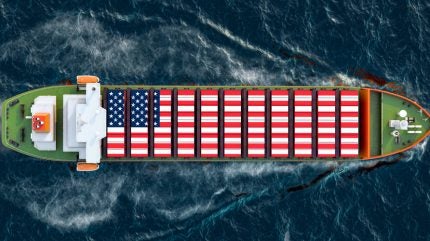
FLOW’s platform, which will include rail terminal and warehouse end destination data, aims to inform capacity decisions, reduce supply chain disruptions and ultimately drive down costs for consumers.
The initiative’s members can use FLOW data as an input into existing company processes to better inform supply chain planning.
DOT said it hopes these efforts will smooth out supply chain volatility and support commercial needs.
DOT and supply chain stakeholders are currently applying lessons learned from the pandemic-caused disruptions in the hope of being able to use the FLOW platform to better predict port and inland network congestion and monitor cargo shifts amid the current Houthi attacks in the Red Sea, as well to reduce traffic in the Panama Canal due to drought conditions.
Through FLOW, DOT gathers, aggregates, and anonymises essential data shared by participants regarding inbound containerised freight. This begins with importer purchase orders and then matches future demand volumes with the existing regional capacity to move ocean containers.
The initiative now includes five of the largest US container ports, seven of the largest ocean carriers, and nine of the 20 largest retailers by imports.

US Tariffs are shifting - will you react or anticipate?
Don’t let policy changes catch you off guard. Stay proactive with real-time data and expert analysis.
By GlobalDataFLOW’s strides are complemented by broader initiatives outlined in President Biden’s Bipartisan Infrastructure Law (BIL). Earlier this month the US Maritime Administration announced that $450m from BIL is available through the Port Infrastructure Development Program (PIDP) including a historic $17bn to fortify coastal and inland waterway ports.
Furthermore, recent grants totalling nearly $5bn have been earmarked to alleviate trucking bottlenecks and enhance freight movement across the country.
“The Biden-Harris Administration’s efforts to strengthen US supply chains have helped reduce inflation from pandemic peaks – and with the expansion of FLOW, we expect to see even greater benefits to US families and businesses,” said US Transportation secretary, Pete Buttigieg.
A recent analysis conducted by the White House Council of Economic Advisors underscored the efficacy of such efforts, attributing more than 80% of the US economy’s reduced inflation since 2022 to the normalisation of supply chains facilitated by initiatives like FLOW.
Participant testimonials on FLOW initiative
Jim McCullen the chief information officer with Century Supply Chain Solutions: said: “The US supply chain infrastructure consists of myriad players that create either the supply or demand components. For the first time in history, we have a common channel, a single source of truth that collects, organises, and presents information that can help each of those players deliver a higher quality of service to their customers.”
Senior vice president of supply chain at TrueValue Jennifer McNeill believes FLOW helps her company deliver supply chain expertise to its retailers to enable consistent movement of goods to their businesses.
Echoing McNeill, executive vice president of MSC Group, Bud Darr added: “Emerging during a period of historic disruption to supply chains, FLOW is intended to provide an invaluable platform for collaboration to facilitate data-driven decision-making to help stakeholders improve and streamline the entire supply chain.”
Ken O’Brien president and CEO of Gemini Shippers Association claims FLOW is a “perfect example” of why public, and private partnerships can work for the betterment of the industry and nation. He said: “As a convening authority FLOW has brought together industry leaders and stakeholders to discuss how data can be used to predict and alleviate supply chain challenges of the future anchored on the aggregation and analysis of diverse stakeholder datasets to provide actionable business intelligence.”
The Port of Los Angeles is “encouraged” by the widespread acceptance of supply chain data sharing that FLOW has enabled. As Port of Los Angeles executive director Gene Seroka stated: “We see opportunities to leverage FLOW to make our port community system – the Port Optimizer – become a more powerful tool for our port customers.”
Jess Whitfield director of global ocean freights at UPS sees the initiative continue to evolve under the USDTO establishing itself as a “trusted index” not only for US companies but for the supply chain needs of other departments within the US Federal government.



